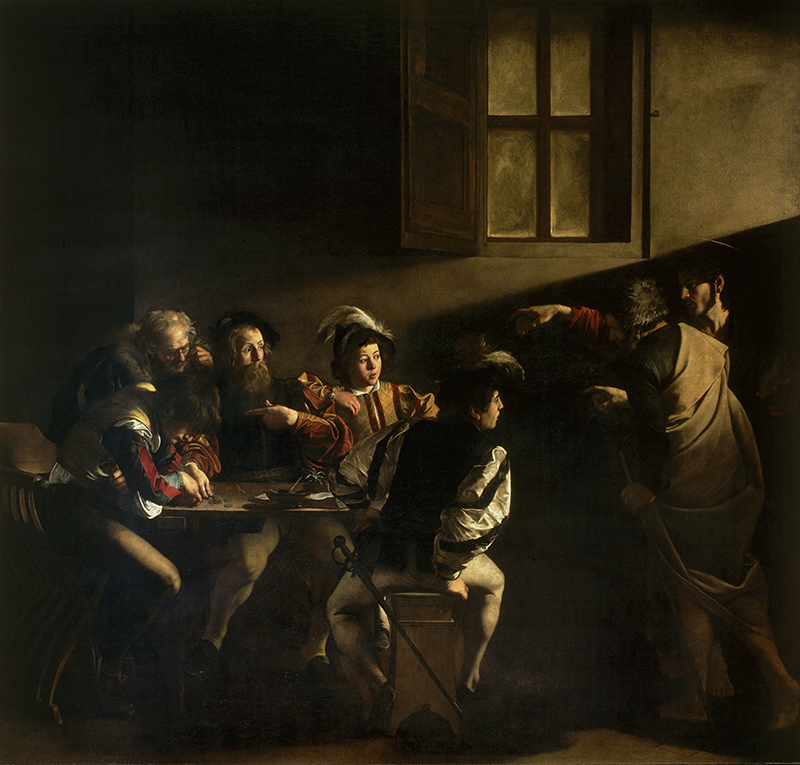
By Rev’d Canon Ian Morter
On 21 September the Church celebrates the life and ministry of St Matthew, an Apostle of Jesus and Evangelist. In the Gospel that bears his name, we are told that he was a tax collector and Jesus met him while about his duties, sitting at the receipt of custom in the City of Capernaum. It was there that Jesus called Matthew to follow him.
Matthew appears in the list of the twelve apostles whereas in Gospels of Mark and Luke the tax-collector is called Levi; generally, it’s assumed they are one and the same person. All tax collectors for the Roman occupying forces were despised and shunned by most Jewish people. This was because they were collaborators of Rome and earned their living by inflating the taxes that were due, so they could take their cut. If you read the Gospel account of the call of Matthew, you will understand that Jesus demonstrated that his ministry was not about judging by outward appearances. He was invited by Matthew to go to his home and dine with him and his friends, and this caused offence and scandal amongst the religious authorities. Yet it was that act of open acceptance by Jesus that no doubt had a profound influence on Matthew. Jesus, had brought someone back to God; forgiven and accepted, Matthew responded to Jesus’ call and became a disciple. There are a number of traditions from the time of the Early Church that tell us that after Jesus Ascension, Matthew first remained in Jerusalem with the other disciples. The Early Church Fathers, Irenaeus and Clement of Alexandria record that Matthew went on to preached the Gospel to the Jewish community in Judea, before going to other countries. But these ancient writers are not in agreement as to which other countries, but almost all sources mention Ethiopia and this is where tradition says Matthew was eventually martyred.

As has become my custom, I will share with you a painting, The Calling of Saint Matthew by the Italian artist Michelangelo Merisi da Caravaggio (1571 – 1610) better known just as Caravaggio. It was painted in 1600 for the Contarelli Chapel in the French Church, San Luigi dei Francesi in Rome. The Chantry Chapel was commissioned in his will by Cardinal Matthieu Cointerel and was to be dedicated to his ‘name saint’ Matthew. Caravaggio received the commission to decorate the three walls of the Chapel. Painted in oils on canvas there is the Calling, the Inspiraton and the Martyrdom of Saint Matthew all painted between 1599 and 1602.
The painting depicts that very moment in St Matthew Gospel when Jesus calls the tax collector. Caravaggio shows Matthew sitting at a table with four other men. Jesus and Peter have entered the room from the right, and Jesus is pointing at Matthew. There is a beam of light illuminating the faces of the men at the table most of whom are looking at Jesus. This is the moment of spiritual awakening and conversion, a popular theme of many Baroque artists. But this scene is characterised by Caravaggio’s distinctive use of the contrast of darkness and light – Chiarosuro.
Debate has raged over which man in the picture is Saint Matthew, as the surprised gesture of the bearded man can be read in two ways. Most art historians assume Matthew is that bearded man, and see him to be pointing at himself, as if to ask “Who me?” And the theory is strengthened when looking at the other two works in the Chapel, because Matthew of the other two paintings is the same bearded man. But a recent less popular interpretation says the bearded man is in fact pointing at the young man at the end of the table, whose head is slumped. So the bearded man is asking “Him?” Another interesting point to consider is the similarity of the gesture of Jesus pointing hand to that of Michelangelo’s creation of Adam by God on the ceiling of the Sistine Chapel (with which Caravaggio would be familiar). So is this a clever reference by Caravaggio to Jesus being the second Adam?
As I come to the end of this reflection on both the event of Calling of Saint Matthew and the painting, I see both in the Gospel account, and in the personal life of Caravaggio, a sense of the need for forgiveness, redemption and acceptance. Matthew, of his former career as a collector of taxes. Caravaggio, as a person with a hot temper, who had fled Rome not long after this painting was completed. He had a sword fight with a young man probably over a young woman, as a result of which his rival had died. Caravaggio escaped arrest by going into exile, travelling via Naples to Malta. After few years in excel he petitioned for a papal pardon and while returning to Rome via Sicily died in Naples in 1610 from either plague or a serious infection.